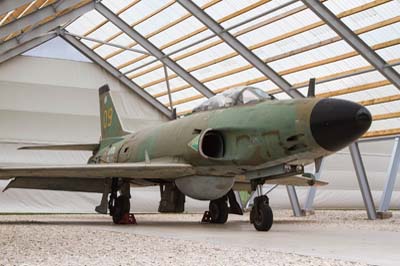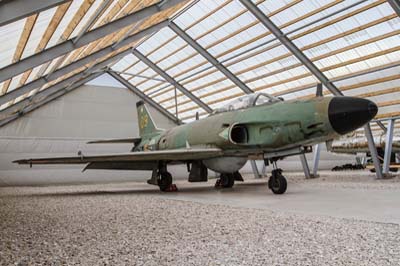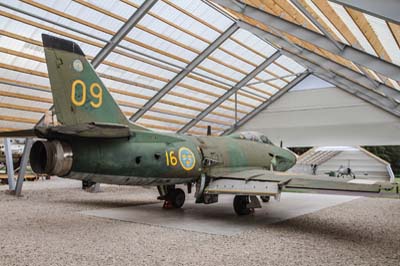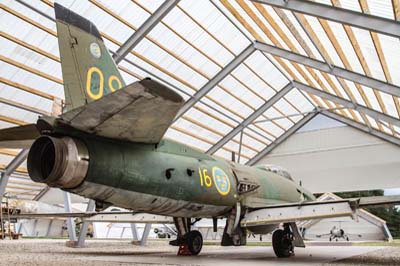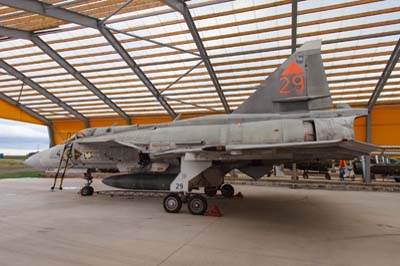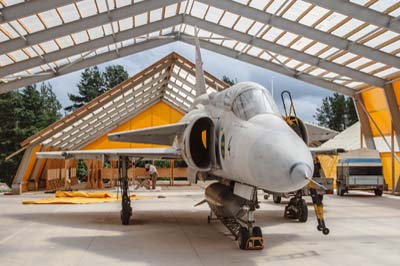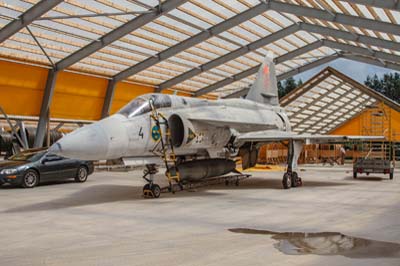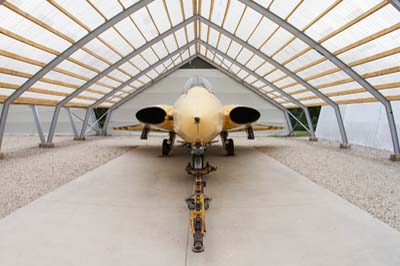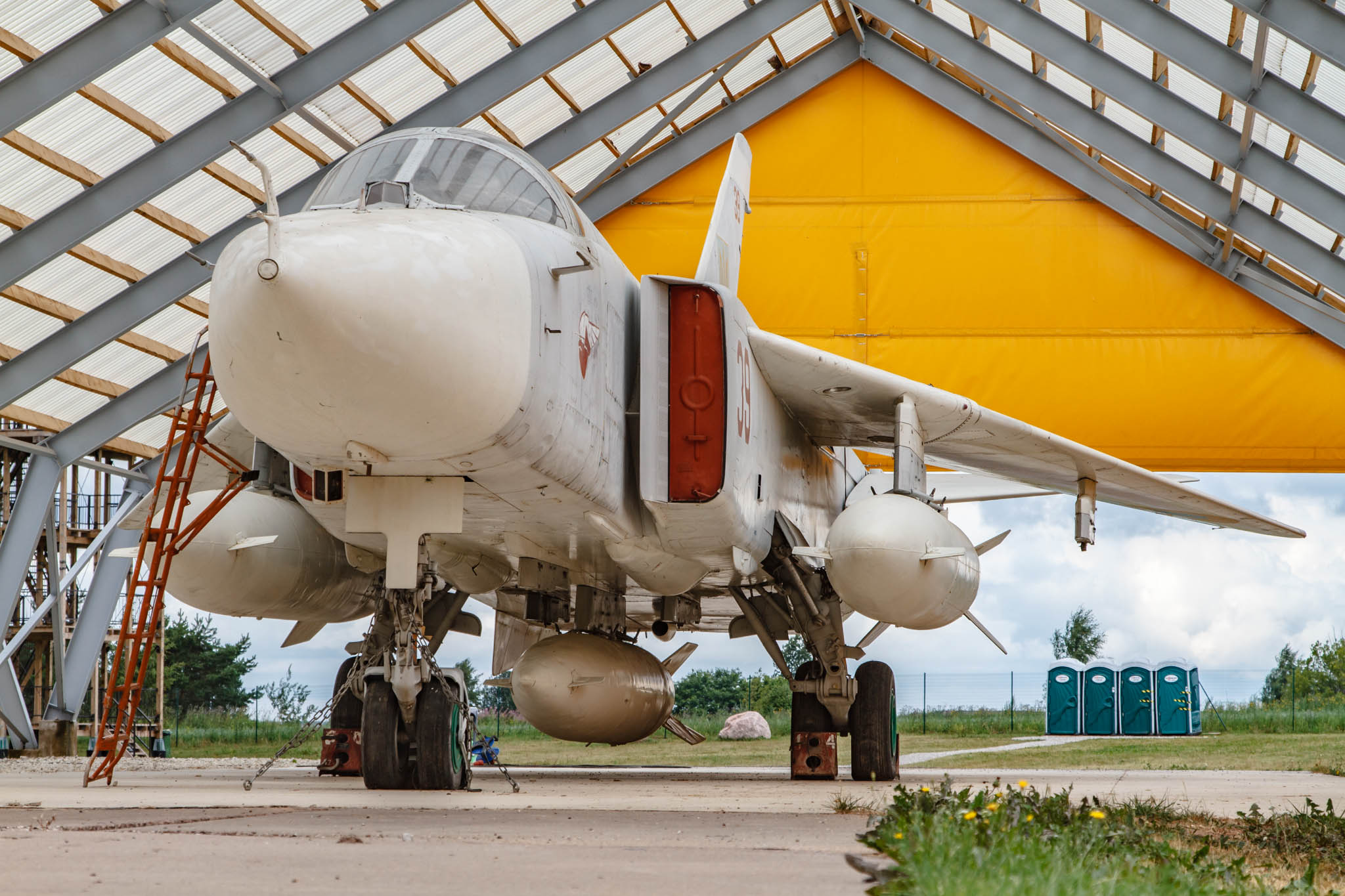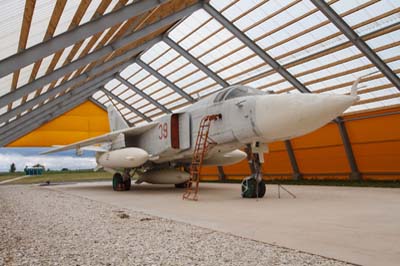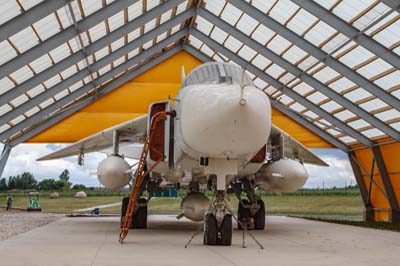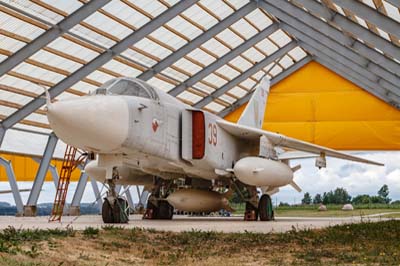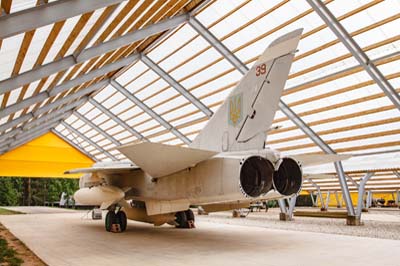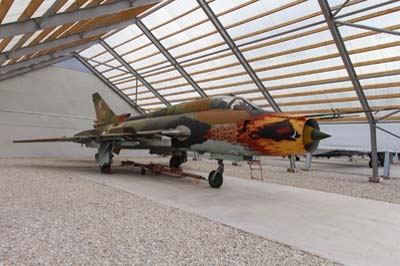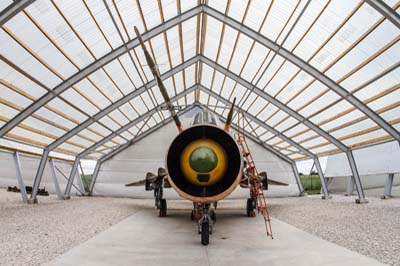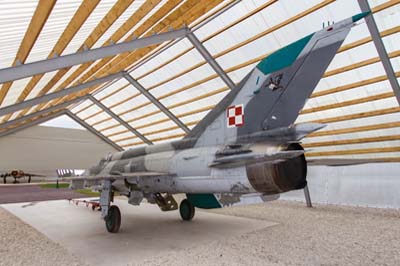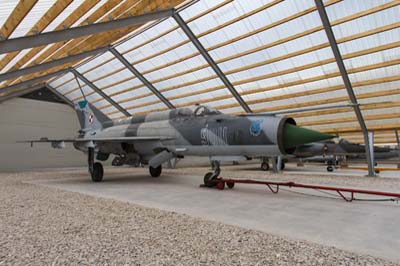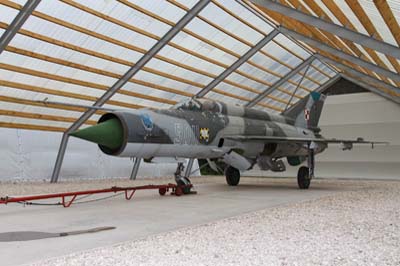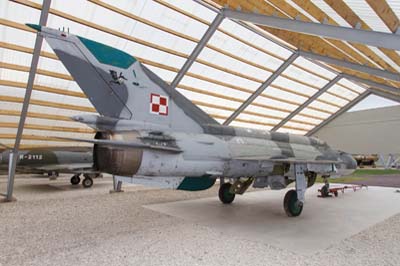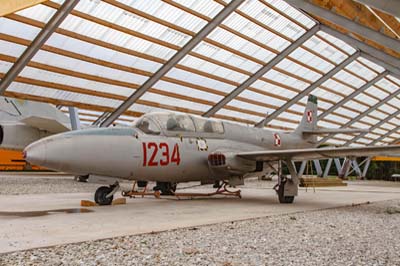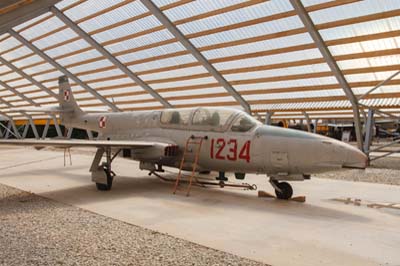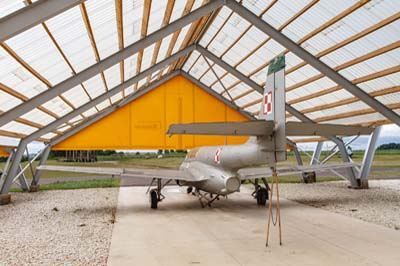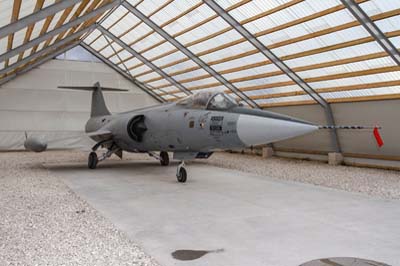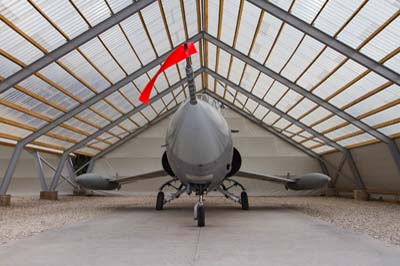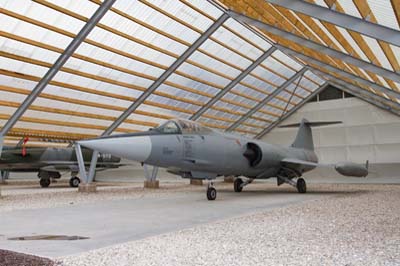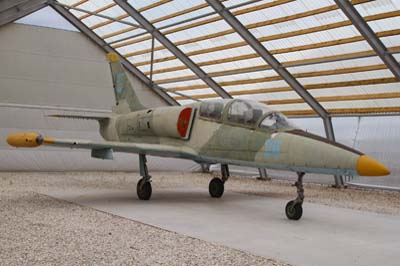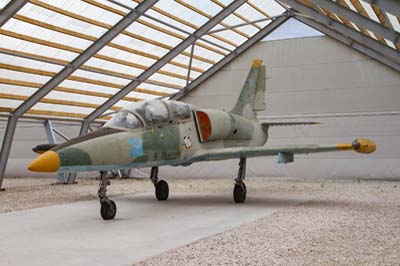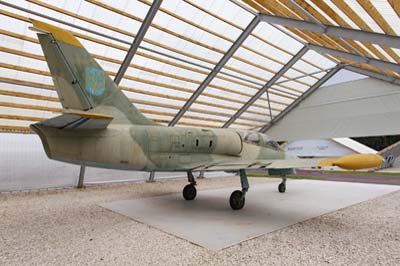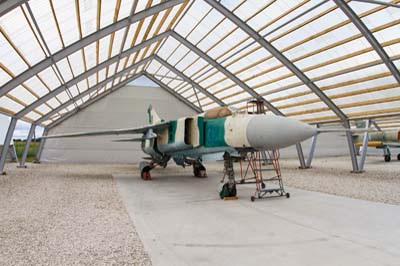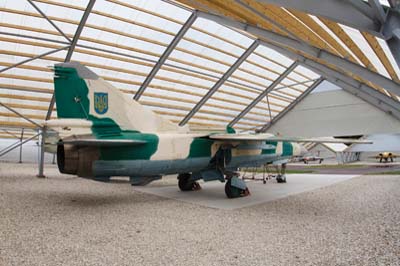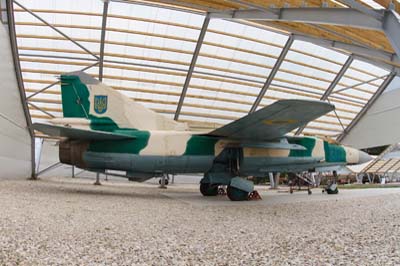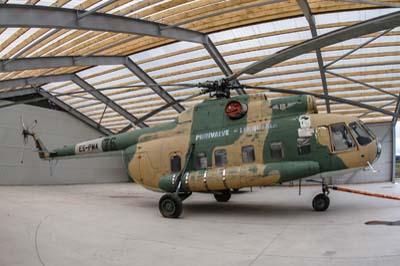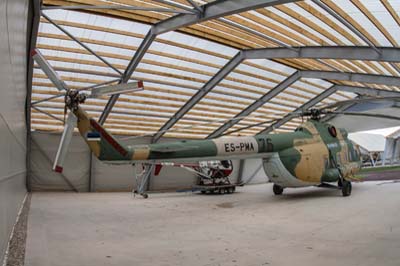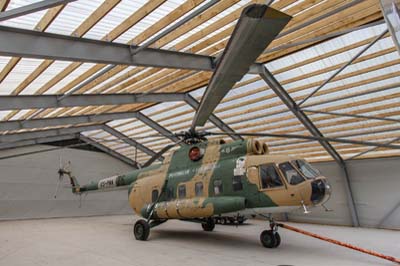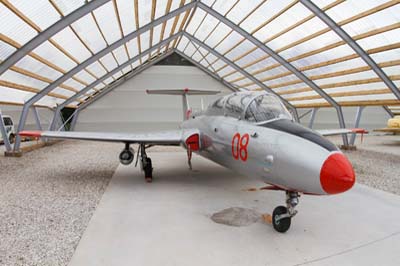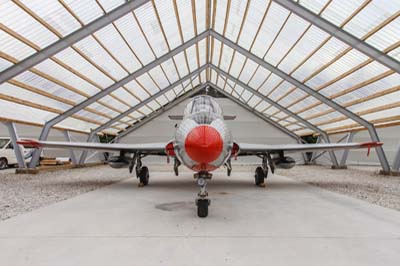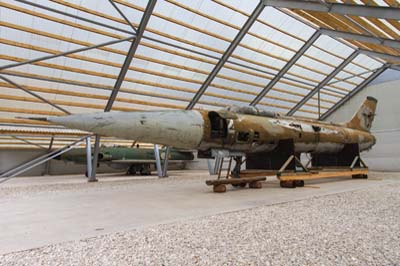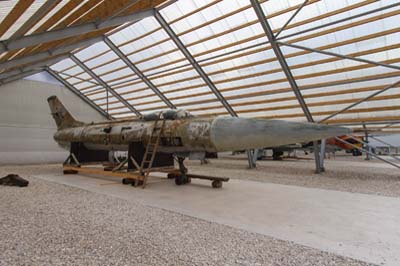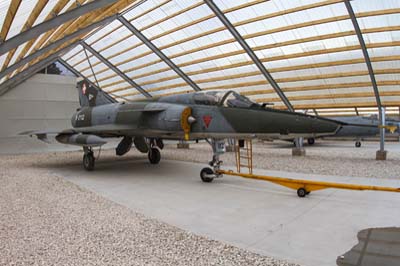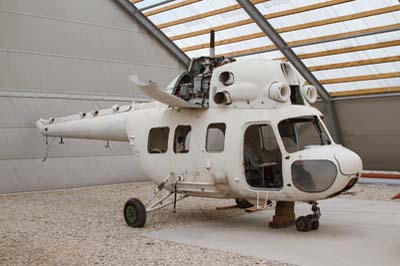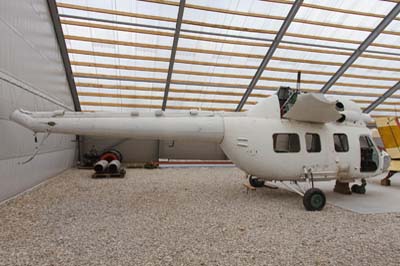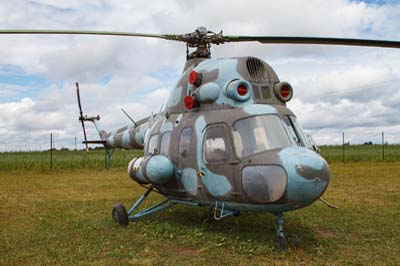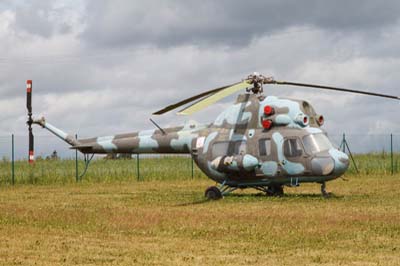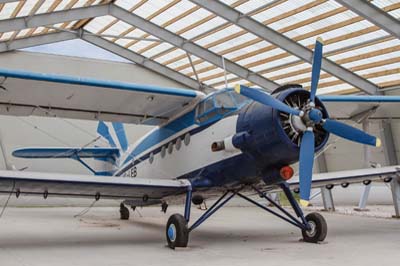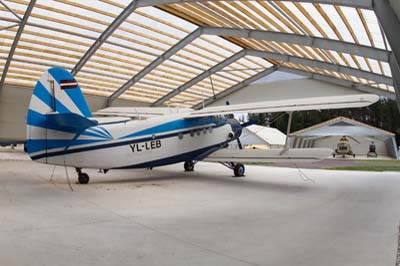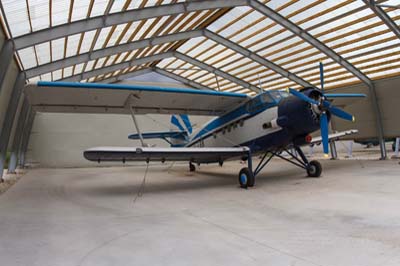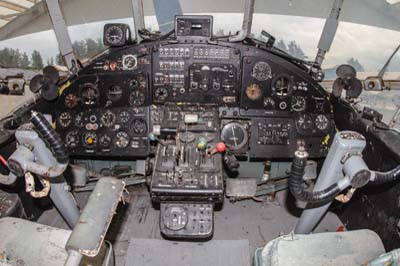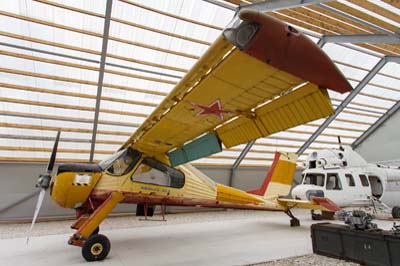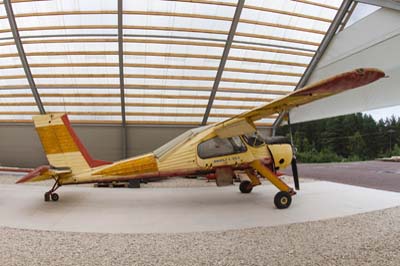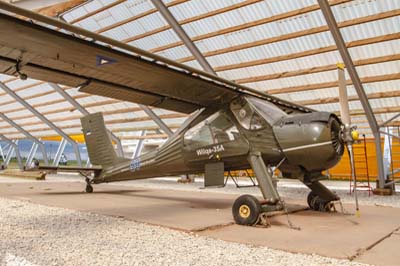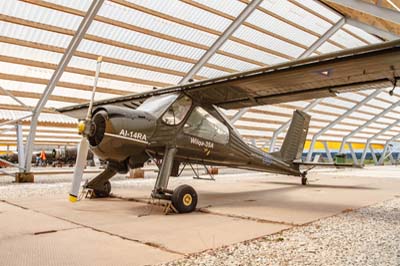Estonian Aviation Museum
(Eesti Lennundusmuuseumi)
Tartumaa, Estonia
July 2011
|
Estonia whilst being in the forefront of aviation in the earliest days of flight it has now got very little to show for it. As a result of virtually continuous occupation by German or Soviet military forces their aircraft have been plundered. So when it was decided in 1999 that they should have an aviation museum they had to gather aircraft from around Europe.
The museum was opened in 2002 in open countryside 16 kilometres from Estonia's second biggest city of Tartu. Tartu had been declared a closed city to foreigners by the Soviet occupiers for 50 years. With the main building opening in 2007 a large amount of money had been spent on the complex which mostly came from the European Union's Regional Aid fund. As part of this program the museum's mission is more than to house aircraft relics from across Europe. Amongst its aims it is to be a technical centre of interest to encourage young people to acquire an engineering education and to provide technical support for the students of the Estonian Aviation Academy. It must advocate aviation and flying whilst perpetuating the history of Estonian aviation and identify Tartu as the birthplace of flying in Estonia. The first demonstration flight in Estonia took place in 1912 in Tartu.
The collection which is expanding year by year contains mostly military jet aircraft from the Eastern Bloc Russia, Ukraine and Poland which are alongside Western aircraft from Sweden, Italy and Switzerland. A few other exhibits such as a Mi-8 helicopter and a link with Estonia as it was formally operated by the 'Piirivalve Lennusalk' (Estonian Border Guard Aviation Corps).
I have not seen a museum like it, each aircraft more or less has its own modern shelter. For me the former Ukrainian Air Force Sukhoi Su-24 'Fencer' was the highlight of the enjoyable experience. It's a pity that the museum is not located at a former Soviet airfield where the essence of the 'Cold War' could be more easily be created.
|
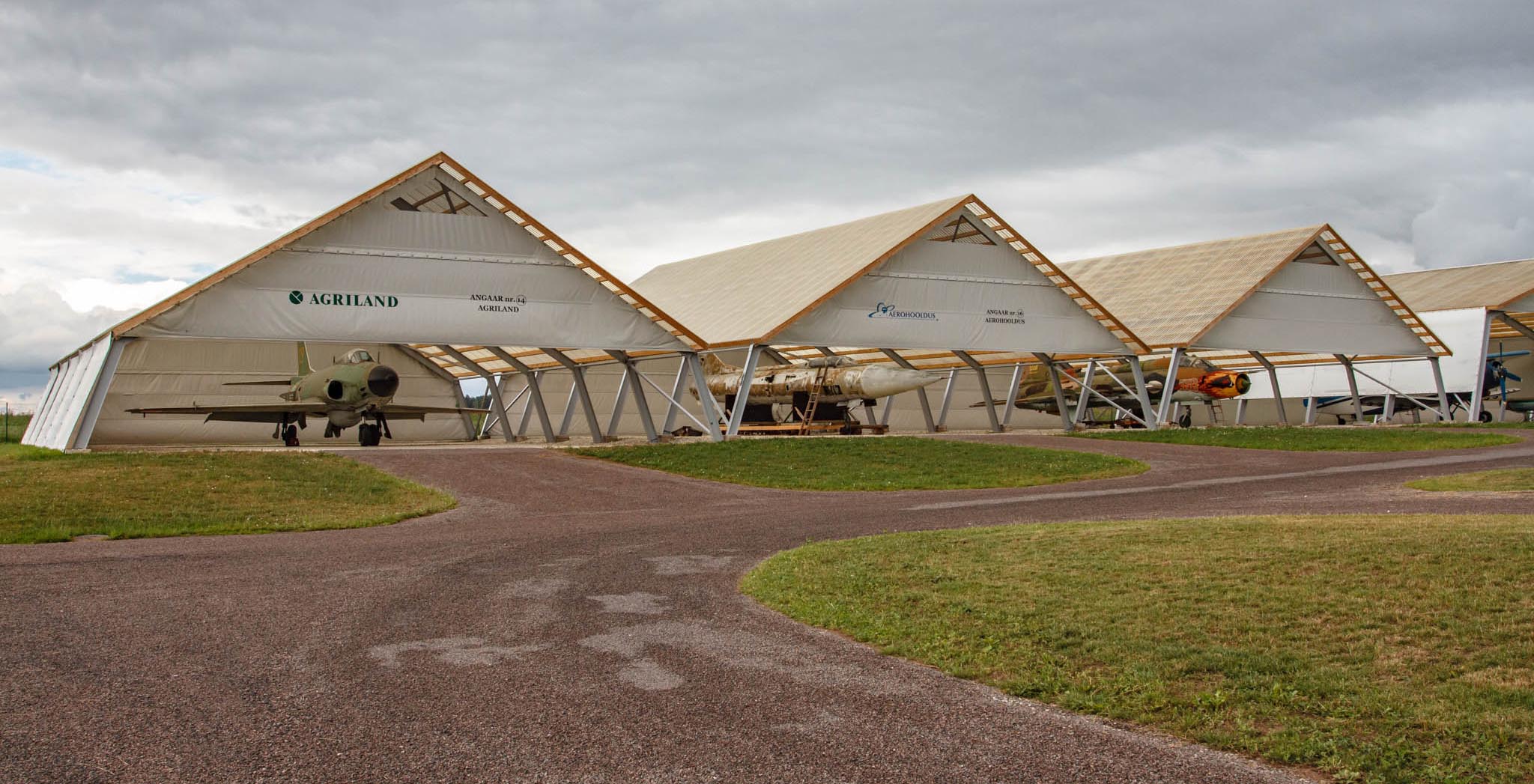 |
| There are two lines of these individual 'hangars'. |
| Left to right: SAAB J32E Lansen (32571 '09'). The J32 was a two-seat, high transsonic attack aircraft manufactured by SAAB from 1955 to 1960 for the Swedish Air Force (Flygvapnet). A Lansen broke the sound barrier on October 25, 1953 when it exceeded Mach 1 in a shallow dive. 15 J32E Lansen were in service from 1972–1997. |
| Left to right: SAAB JA-37DI Viggen (37429 '29) ex Swedish Air Force. |
| Left to right: SAAB J35J Draken (35541 '43') ex Swedish Air Force. |
| Sukhoi Su-24 'Fencer' (1515304 '39 red') ex Ukrainian Air Force. |
| Left to right: Sukhoi Su-24 'Fencer' (1515304 '39 red') ex Ukrainian Air Force. |
| Left to right: Sukhoi Su-22 M-4 'Fitter' (3212) ex Polish Air Force. Mikoyan-Gurevich MiG-21MF 'Fishbed' (9011) ex Polish Air Force. |
| Left to right: Mikoyan-Gurevich MiG-21MF 'Fishbed' (9011) ex Polish Air Force. |
| Left to right: PZL TS-11 200SbisD Iskra (1234) ex Polish Air Force. |
| Left to right: Lockheed F-104G Starfighter (MM6507). The first F-104A Starfighter flew in 1954. Production of the multi-role, all-weather strike fighter was started in many of the countries which adopted this unique aircraft, apart from Fiat/Aeritalia, including Fokker in Holland, Messerschmitt in Germany and SABCA in Belgium. The initial batch of 12 two-seat TF-104G Starfighter's were manufactured by Lockheed and assembled by FIAT from 1965. The F-104G had a maximum speed of 1,328 m.p.h. at 35,000 feet and could climb to 90,000 feet. The first F/RF/TF-104G Starfighters entered service with the AMI in 1963 to replace the F-86 and F-84s. FIAT eventually manufactured 164 F-104G, 119 RF-104G and 245 F-104S 40 of which were exported to Turkey. The S for 'Sparrow' variant was an improved F-104G capable of fulfilling the air-to-ground attacking role utilising the R21G/H ground mapping contour following radar and deliveries were completed in 1979. Some aircraft were later upgraded to F-104S ASA standard to carry the Apside and AIM-9L air to air missile from 1988. The F-104Gs remained in service until 1983 and the last AMI Starfighter was not withdrawn until 2004. |
| Left to right: Aero L-39C Albatross (533504 '36 blue') ex Ukrainian Air force. |
| Left to right: Mikoyan-Gurevich MiG-23 MLD 'Flogger' (12623 '32 blue') ex Ukrainian Air Force. |
| Left to right: Mil Mi-8S (93+42 / ES-PMA '76' ) inscribed 'Piirivalve Lennusalk' (Estonian Border Guard Aviation Corps). |
| Left to right: Aero L-29 Delfin ('08 red'). |
| Left to right: Yakovlev Yak-28P 'Firebar' ('52') a two-seat all-weather interceptor of the Soviet Air Force and Dassault Mirage IIIRS (R-2112) ex Swiss Air Force. |
| Left to right: Mil Mi-2 (511611090) ex Soviet Air Force and Mi Mil 2RL (0615) ex Polish Air Force. |
| Left to right: Antonov An-2P (YL-LEB). |
| Left to right: PZL 104 Wilga 35A (ES-TAB / 15800578) ex DOSAAF Russia (Voluntary Society for Cooperation with the Army, Aviation and Fleet). |
| Left to right: PZL 104 Wilga 35A (ES-RAD / 16820660 '50 blue') ex DOSAAF and Estonian Defence League. |

